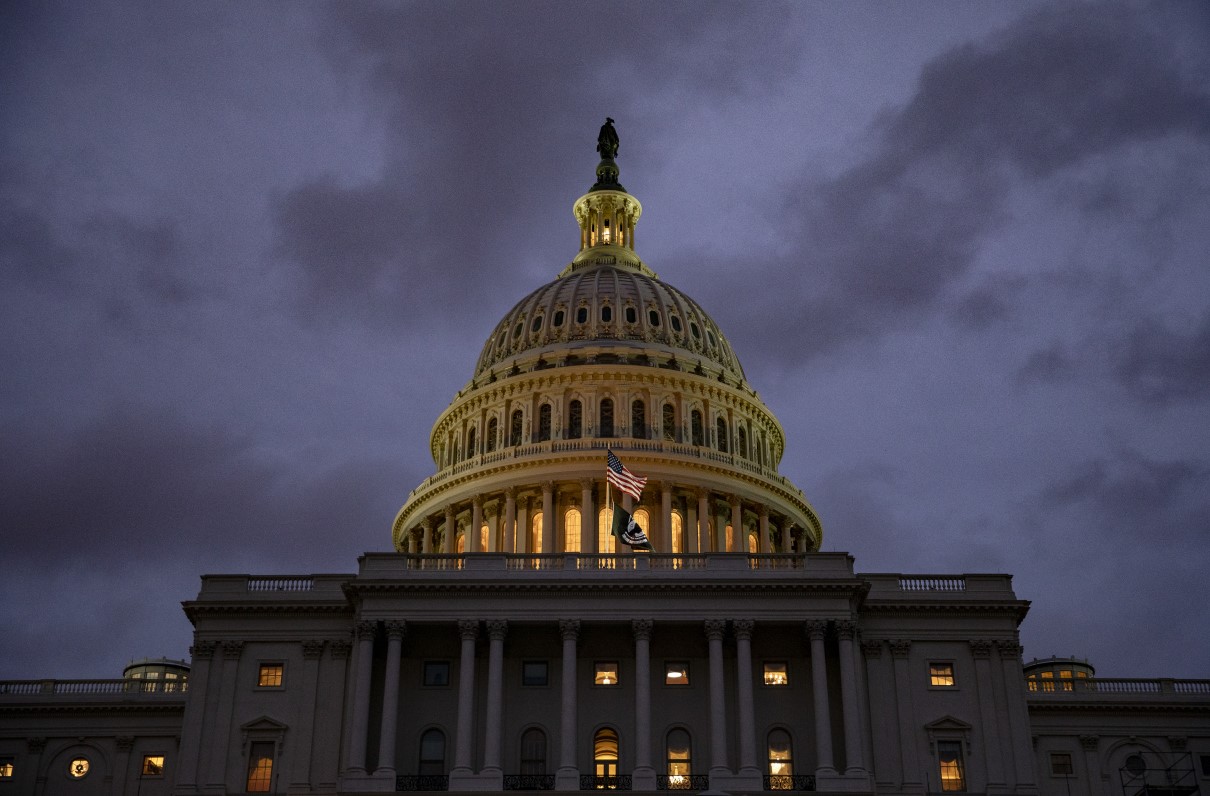As we enter a new year, some old problems seem ever present, like a pesky bug that will not go away. One example: While some in Congress had hoped to address the debt ceiling limit in the last session, it was all lawmakers could do to pass a federal budget before time ran out.
So the nation again enters a precarious time where the Treasury Department must take extraordinary measures to prevent default on the national debt. But measures such as suspending investments in certain federal employee retirement and disability funds only go so far.
If history repeats itself, Congress will not act until the 11th hour, leading to a chaotic few months for everyone with connections to the federal government, including servicemembers, veterans, and the wider military community. This could include threatened cuts across the board, including pay and benefits from DoD and the VA.
[RELATED: TRICARE For Life Benefit Threatened by Congressional Budget Office Report]
Treasury Secretary Janet Yellen urged House and Senate leaders last week to act quickly to either increase or suspend the debt limit. Such a default would be the first in history for the U.S. and “would cause irreparable harm to the U.S. economy, the livelihoods of all Americans, and global financial stability,” Yellen wrote.
What Could Happen?
The economy is already in a fragile state; a default on debt, which means the U.S. would not be able to pay back the money it borrowed, could plunge the country into a recession and result in higher interest rates for future government loans, further limiting the federal budget.
The immediate fallout of a default could prevent beneficiaries from receiving Social Security and Medicare benefits and delay payments for government employees, uniformed service personnel, and contractors, among using other funding authorized by Congress.
A more lingering byproduct of the default threat, especially during uncertain economic times, could be the tightening of federal budgets. But while some lawmakers see the debt crisis as an opportunity to implement spending cuts and reduce the national debt, others believe the ramifications of a debt default are overblown, and still others warn of the halting of basic government functions, limitations on the public health systems, and significant economic distress in the event of default.
[RELATED: How Big Will the 2024 Military Pay Raise Be?]
Such calamity would place further stress on our servicemembers, retirees, and veterans, as well as their families, caregivers, and survivors. Though life in uniform is not always predictable, those who serve or have served their country expect their country to honor their commitment to service.
Unpredictable budgets can lead to an unpredictable all-volunteer force (AVF), and wider instability in our national defense. Our nation is not able to defend itself without a dedicated and sustainable force. There must be a mutual commitment between those who serve and our nation: Any loss of trust and confidence in the value of service could prevent current and future generations from wanting to serve.
MOAA urges Congress to commit its full attention to strengthening and sustaining the AVF, to include honoring its obligation to protect and defend the benefits servicemembers and their families earned through service to their country. The dire national economic conditions bring preservation of the AVF to the forefront. Congress and our nation must prioritize the value of service in uniform and avoid transferring undue financial burdens and hardships onto those who swore to protect and defend their country.
[REGISTER TODAY: MOAA's Legislative Action Center]
History of the Debt Ceiling
The debt limit was created more than a century ago to make it easier for the government to borrow money. It was the means for financing both world wars, giving the Treasury the ability to categorize and issue bonds so the government could borrow to cover the gap between spending and the amount of revenue brought in through taxes approved by the Congress.
The debt ceiling was last raised by $2.5 trillion in December 2021. Today, it stands at a little under $31.4 trillion.
Raising the debt ceiling is nothing new — in many cases, the process has been standard operating procedure for Congress. According to the Treasury, since 1960, lawmakers have permanently raised, temporarily extended, or changed the definition of “debt limit” to avoid default 78 times.
Unfortunately, the debt ceiling has increasingly become a partisan negotiating tactic among lawmakers. Disputes resulted in government shutdowns in 1995 and 1996, and a fight in 2011 upset the financial markets and caused the first-ever downgrade of the country’s credit rating.
What’s Ahead: Congressional Stalemate or Progress?
No one can predict how things will unfold in the next few months. One thing is clear: Congress has a very short time to act — by June or August, per the predictions of the Treasury and some economists, it must either raise, suspend, or eliminate the debt limit to avoid default.
Each passing year, it becomes more difficult for lawmakers to work together to address threats and get authorization and appropriation bills through Congress. MOAA members and our partners must remain ever vigilant and attuned to the threats facing our nation, and what those threats mean for those in and out of uniform. Service-earned benefits are not guaranteed, and it is more important than ever for the uniformed service and veteran communities to rally together and engage with their members of Congress to remind them of their obligation to protect and defend what has been earned through that service.
MOAA urges all our members and those you know to join in our legislative advocacy efforts. Our motto, “Never Stop Serving,” is at the core of MOAA’s culture — we never stop being your voice on Capitol Hill. Watch for The MOAA Newsletter and MOAA’s Advocacy News page for ongoing updates and action alerts throughout the year to be ready to engage and serve.

